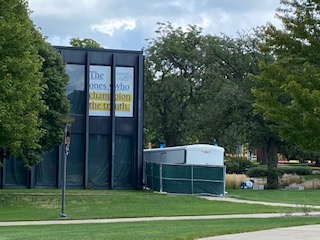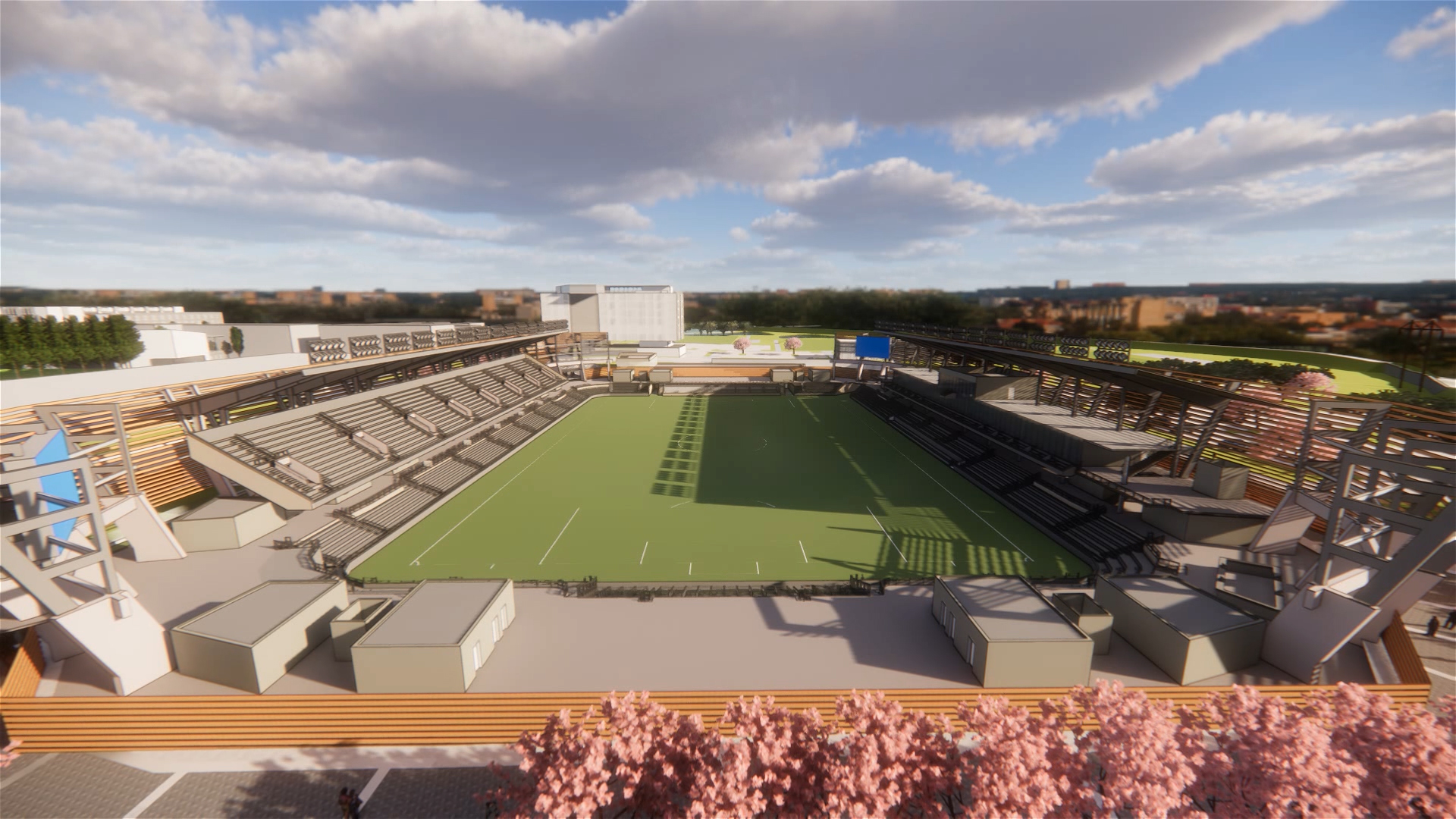Students, staff unprepared
Story by Taylor Soule
Drake University lacks a publicized, campus-wide lockdown plan in the event of an active shooter on campus. Officials said they are keeping the response plans private at the request of the Des Moines Police Department and Polk County Emergency Management.
Though the student body president said that all Drake faculty and staff know lockdown procedures, School of Journalism and Mass Communication Associate Dean David Wright disagreed, citing insufficient instruction.
“That is not true,” Wright said. “I don’t believe there is a good level of training at the faculty level.”
Like Wright, Lisa West, associate professor of English, said she has little knowledge of a campus-wide procedure in the event of a shooting on campus.
“I do not know about a general lockdown procedure,” West said.
Four shootings have occurred on college campuses in 2013. With the shock of the Sandy Hook Elementary and Virginia Tech massacres still lingering, schools across the country have publicized and practiced their security procedures in the event of a shooting on campus.
In an email, President David Maxwell said publicizing the response plan might aid a potential perpetrator. Drake only shares the plan when necessary to protect campus.
“The reason that the university’s emergency response plan is shared only on a need-to-know basis is that it contains detailed instructions about the university’s response to all kinds of threats,” Maxwell said. “If someone was planning a violent assault on the university community, detailed knowledge of our response plans would give them a tactical advantage, essentially giving them the ability to plan ways to minimize the effectiveness of our response.”
Drake Security Chief Hans Hanson echoed Maxwell’s concerns. Typically, Hanson said, active shooters are students or former students at the institution.
“A history of ‘shooters’ at educational institutions, and most other entities, shows the shooter most likely is a current member of said community or a past member of the community,” Hanson said in an email. “Thus, discussing Drake’s security response in the public arena would be fool-hearty and possibly even put members of the community in danger.”
Schools across the country have amplified, publicized and rehearsed their security procedures in wake of recent shootings at the University of Maryland, Hazard Community and Technical College, Stevens Institute of Business and Arts, Lone Star College and Sandy Hook Elementary.
Drake has yet to follow the example of nearby Simpson College in Indianola.
Last October, Simpson staged a campus-wide active-shooter drill complete with student actors playing victims and survivors. Simpson, which has 1,400 students, sits 20 miles north of Drake.
The campus-wide drill included the Indianola Police Department, the Indianola Fire Department, Simpson administrators, Simpson Security and students. Police officers practiced neutralizing an active shooter threat in an academic building on campus. After neutralizing the threat, rescue personnel tended to student “survivors” equipped with a variety of injuries.
“We told the students who were survivors, ‘We want you to do whatever you would normally do in this scenario,’” said Simpson Director of Security Chris Frerichs. “So, they did everything they could do. They barricaded the doors. They did as close to being an actual drill as they could. We told them that was the goal.”
Like Bulldog Alert at Drake, Simpson uses S.A.F.E., or Simpson Alert For Emergencies, to update students about threats via text message. Simpson Security tested the S.A.F.E. system throughout the drill. After the drill, Simpson Security invited participants to reflect on any glitches in the procedure.
At Iowa State University in Ames, students have the opportunity to take A.L.I.C.E — Alert, Lockdown, Inform, Counter, Evacuate — courses. Offered by the ISU Police Department, A.L.I.C.E. classes teach students how to handle active shooter situations.
Virginia Tech in Blacksburg, Va., has revamped security in wake of the April 16, 2007, shooting that killed 33, including student gunman Seung-Hui Cho. Residence halls remain locked 24 hours a day and students enter with electronic key cards.
Des Moines Public Schools recently publicized increased security precautions against intruders. The district implemented key-card access to all buildings and implemented intruder locks, allowing all doors to lock from the inside.
Drake lacks campus-wide intruder locks. In Meredith Hall, a majority of classrooms lock only from the outside.
Though Drake has yet to stage a campus-wide active shooter drill like Simpson, the Drake Safety Task Force has addressed the recent increase in shootings on college campuses.
“I sit on a safety committee task force, and it’s on the top of their agenda,” said Student Body President Amanda Laurent. “They are thinking ahead of what students are thinking. I don’t think it’s really in students’ heads. I mean, people always say it could happen here, so it could happen here. You do need to have an action plan in place, and Drake is thinking ahead for that. We have a campus-wide lockdown procedure that all faculty, professors and staff know about. Students don’t necessarily know about it.”
Four shootings have occurred on college campuses this year alone. At Lone Star College in Houston, Texas, three people were injured when two men opened fire after an argument on Jan. 22. At Stevens Institute of Business and Arts in St. Louis, Mo., a gunman injured an administrator before injuring himself with a gunshot wound to the stomach on Jan. 15.
The same day at Hazard Community and Technical College in Hazard, Ky., a gunman killed two and injured one in a campus parking lot. Most recently on Feb. 12, a University of Maryland student shot his two roommates, killing one, before killing himself at their off-campus residence in College Park, Md.
As active shooter situations traumatize college campuses around the country, the Drake Safety Task Force has proposed changes to security procedures across potential threats. The proposed changes include improving the Bulldog Alert System, which notifies students of threats on or near campus via text message, telephone, email and social media.
“They are trying to use the Bulldog Alert system in a more meaningful way,” Laurent said. “A lot of students complain, ‘Oh, we didn’t hear about that,’ so they’re trying to decide what’s urgent and what’s not because they don’t want to overuse it like, ‘Oh, I have already gotten this alert three times this week.’ They want you to know when you get an alert that it is serious and to take it seriously.”
Although Bulldog Alert broadcasts threats, Drake students lack the training to respond appropriately, particularly in active shooter situations.
First-year Alyssa Sievers has never rehearsed a lockdown. Sievers suggested implementing a lockdown drill at Summer Orientation to teach incoming first-year students how to handle active shooter situations.
First-year Katie Roth has never practiced a lockdown either. Roth said she hopes Drake implements a lockdown drill in the future.
“Whenever you can be ready, it’s good to know what to do,” Roth said.
After four years without incident, senior Jill Applegate expressed little concern for her safety on campus. The unpredictability of a threat lingers in her mind, however.
“Since I have already been here four years, and nothing has happened, I am not really concerned, but I guess anything could happen at any time,” Applegate said.
Like Drake professors Wright and West, Applegate has limited knowledge of how to handle an active shooter situation on campus.
“I am not sure what would be beneficial for us to know in case of that event,” Applegate said. “I don’t really know.”




